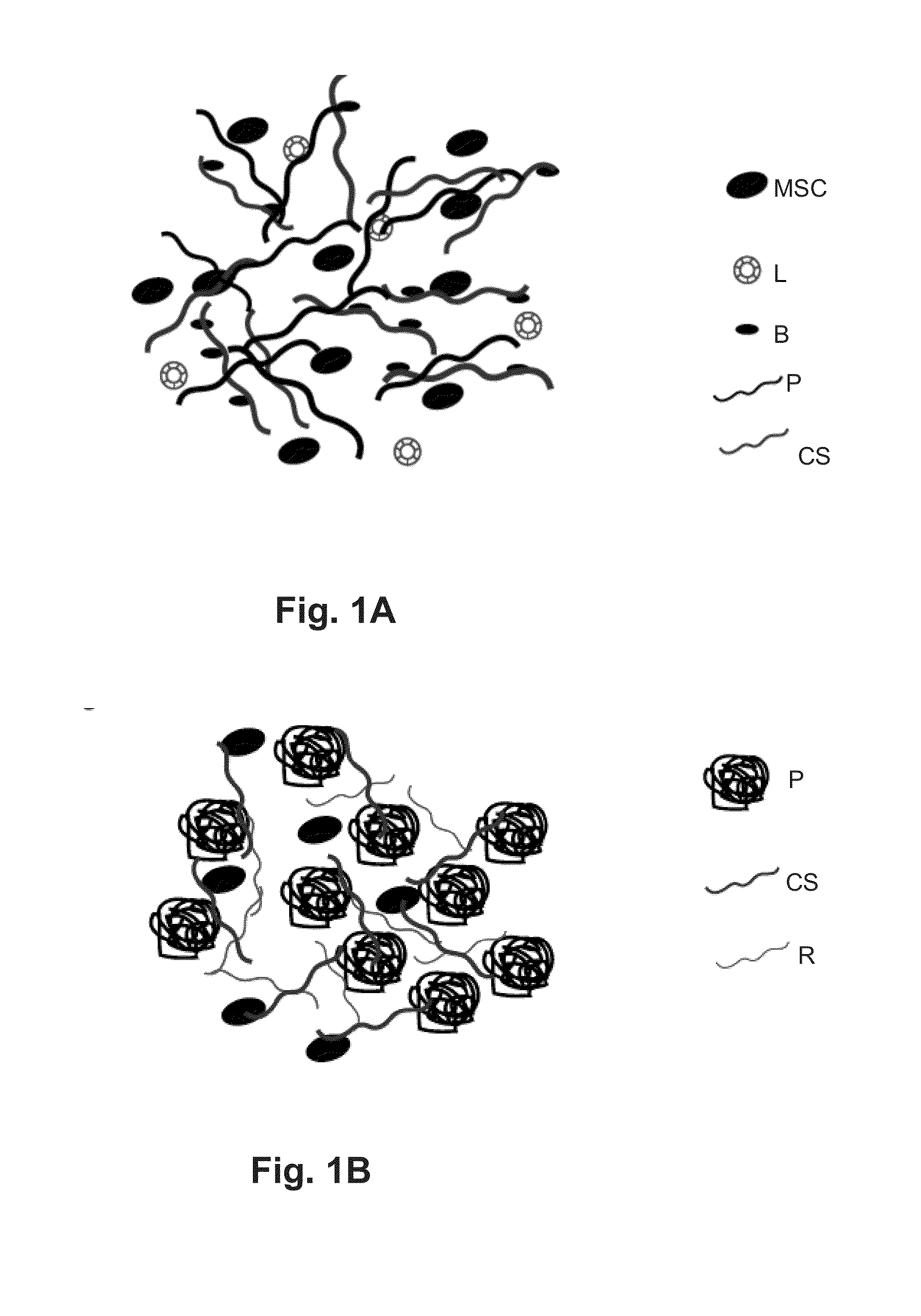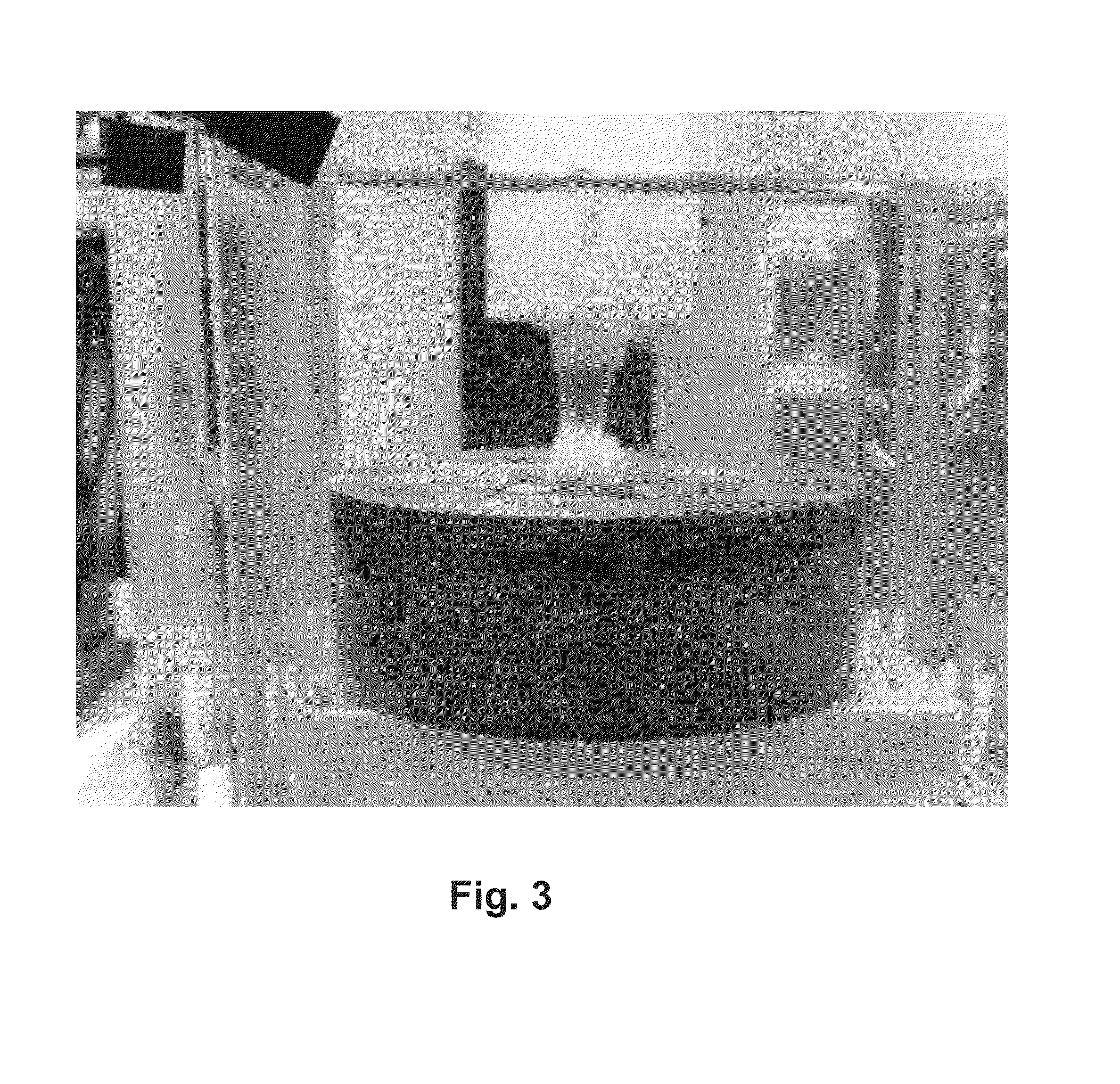Self-Assembling Biomimetic Hydrogels Having Bioadhesive Properties
a bioadhesive and self-assembling technology, applied in the field of tissue engineering and implantation, can solve the problems of long-term cell viability and differentiation within the matrix, limiting the practical applicability of such compositions in ethical practice involving human or other subjects, and leaking of unreacted macromers into the physiological environment and heat generation
- Summary
- Abstract
- Description
- Claims
- Application Information
AI Technical Summary
Benefits of technology
Problems solved by technology
Method used
Image
Examples
example 1
[0094]Synthesis and Characterization of PNIPAAm-CS Copolymers
[0095]PNIPAAm-CS copolymers were synthesized in our laboratory. Methacrylated chondroitin sulfate (mCS) was prepared by known techniques (Bryant et al., 2004, Macromolecules 37:6726-33) with methacrylic anhydride using molar ratios of methacrylic anhydride (MA) to CS of 25:1, 50:1, and 200:1, yielding a degree of substitution (DS) of the CS of 0.1, 0.2, and 0.5, respectively, as determined by 1H NMR. Redox polymerization of NIPAAm monomer in the presence of each of the three batches of methacrylated CS was then performed. The molar ratio of NIPAAm monomer units to mCS chains was varied between 600:1 and 4000:1. Reaction products were freeze-dried and ground into powder prior to further use. Powders were redissolved in phosphate buffered saline (PBS, pH 7.4) to form 5 wt % solutions.
[0096]Compressive loading tests were performed using a FGS-200PV E-Force Test Stand device using standard methods. The biomaterial samples were...
example 2
[0107]Self-Assembling Biomimetic Hydrogels with Bioadhesive Properties for Tissue Engineering Applications
[0108]Tissue engineering is a multidisciplinary field that aims to repair or regenerate lost or damaged tissues and organs in the body. Recent developments in this area have led to the design of biomimetic scaffolds, or three-dimensional engineered biomaterials that reproduce the mechanical and biochemical properties of natural tissue. Such materials have desirable biological properties and utilize cells and biochemical cues to promote the formation of new ECM. For the repair of certain load-bearing tissues such as bone and cartilage, success can be dependent on scaffold adhesion or integration with the surrounding host tissue to prevent dislocation. Such integration may be achieved with the use of a bioadhesive polymer that can covalently bond with tissue. However, current bioadhesive polymers suffer from poor biocompatibility. The objective of the experiments described in this...
example 3
[0118]Characterization of Injectable Hydrogels Based on Poly(N-isopropylacrylamide)-g-Chondroitin Sulfate with Adhesive Properties for Nucleus Pulposus Tissue Engineering
[0119]The goal of the experiments described in this example was to develop an injectable tissue engineering scaffold for the treatment of lower back pain, which is caused by the dehydration of the nucleus pulposus (NP) of the intervertebral disc. Ideally, scaffolds for NP regeneration should have the ability to be implanted minimally invasively, form an adhesive interface with surrounding disc tissue to eliminate the risk of dislocation, and possess tunable mechanical properties for the maximum restoration of healthy disc biomechanics. In this work, a family of in situ forming hydrogels based on poly(N-isopropylacrylamide)-graft-chondroitin sulfate (PNIPAAm-g-CS) were evaluated for their compressive mechanical, degradation, and bioadhesive properties.
[0120]It was shown experimentally and computationally with the Neo...
PUM
| Property | Measurement | Unit |
|---|---|---|
| Temperature | aaaaa | aaaaa |
| Bioactive | aaaaa | aaaaa |
| Bioadhesion | aaaaa | aaaaa |
Abstract
Description
Claims
Application Information
 Login to View More
Login to View More - R&D
- Intellectual Property
- Life Sciences
- Materials
- Tech Scout
- Unparalleled Data Quality
- Higher Quality Content
- 60% Fewer Hallucinations
Browse by: Latest US Patents, China's latest patents, Technical Efficacy Thesaurus, Application Domain, Technology Topic, Popular Technical Reports.
© 2025 PatSnap. All rights reserved.Legal|Privacy policy|Modern Slavery Act Transparency Statement|Sitemap|About US| Contact US: help@patsnap.com



